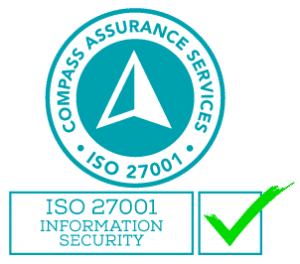In today’s rapidly evolving digital landscape, staying one step ahead of potential security threats is crucial for businesses of all sizes. Enter Microsoft Sentinel, a cutting-edge cloud-native security information and event management (SIEM) solution designed to empower organisations with advanced threat detection and response capabilities.
Mastering Microsoft Sentinel will not only give you the upper hand in safeguarding your digital assets, but will also streamline your security operations with efficiency and finesse. In this comprehensive guide, we will unveil top tips and essential best practices for harnessing the full potential of Microsoft Sentinel.
Importance of security operations in modern business
According to the Australian Cyber Security Centre (ACSC), 164 cybercrime reports are made every day – about one every 10 minutes. Many more go unreported.
A well-functioning security operations center (SOC) can proactively identify, analyse, and respond to potential threats, enabling organisations to prevent breaches, minimise damage, and maintain trust with customers, partners, and stakeholders.
Adopting a powerful, flexible, and scalable security information and event management (SIEM) solution is essential for organisations looking to stay ahead of the curve and safeguard their digital assets. Microsoft Sentinel, a cloud-native SIEM solution, offers advanced threat detection and response capabilities, making it an ideal choice for businesses seeking to optimise their security operations and defend against the ever-growing number of cyber threats.
What is Microsoft Sentinel?
Microsoft Sentinel is a cloud-native SIEM solution built on Azure, Microsoft’s cloud computing platform. It provides organisations with a centralised platform for collecting, analysing, and responding to security events and incidents. By leveraging the power of artificial intelligence (AI) and machine learning (ML), Microsoft Sentinel enables security teams to detect and respond to threats faster and more efficiently, freeing up valuable resources to focus on more strategic tasks.
Key features of Microsoft Sentinel
Sentinel offers a wealth of features designed to help organisations improve their security operations and protect their digital assets. Some of the key features include:
Data Collection and Integration: Collects data from a wide range of sources, both within and outside of the Microsoft ecosystem. This includes log data from on-premises systems, cloud services, and third-party applications, as well as threat intelligence feeds and other external sources.
Advanced Analytics: Uses AI and ML techniques to analyse collected data and identify patterns, trends, and anomalies that may indicate potential security threats. The platform includes a variety of pre-built analytics rules, as well as the ability to create custom rules tailored to your organisation’s specific needs.
Threat Hunting: Provides advanced threat hunting capabilities, allowing security analysts to proactively search for signs of malicious activity within their environment.
Incident Management and Response: Includes a comprehensive incident management and response framework that enables security teams to triage, investigate, and remediate incidents efficiently and effectively.
Dashboard and Reporting: Provides a customisable dashboard that gives security teams a real-time view of their organisation’s security posture, including key performance indicators (KPIs), trends, and alerts.
Best practices for threat hunting with Microsoft Sentinel
Proactive threat hunting is an essential component of modern security operations, allowing you to uncover hidden threats and prevent breaches before they can cause damage. Microsoft Sentinel provides a wealth of tools and techniques for effective threat hunting, including:
Kusto Query Language (KQL): KQL is a powerful query language that allows you to analyse your security data and uncover patterns, trends, and anomalies that might indicate potential threats. Make sure to familiarise yourself with KQL’s advanced query techniques, as these can help you conduct deep investigations and uncover hidden threats.
Jupyter Notebooks: Sentinel integrates with Azure Notebooks, a cloud-based Jupyter Notebook service that allows you to create interactive, shareable notebooks for threat hunting and investigation. Jupyter Notebooks can help you streamline your threat hunting workflows, collaborate more effectively with your team, and document your findings for future reference.
Threat Intelligence Integration: Integrating Sentinel with threat intelligence feeds can help you enrich your security data with the latest information on known threats, vulnerabilities, and IOCs. This can enable you to identify and respond to emerging threats more quickly and effectively, as well as prioritise your threat hunting efforts based on the most relevant and up-to-date intelligence.
Visualisation Tools: Sentinel includes a variety of visualisation tools that can help you explore your security data and uncover hidden patterns and relationships. This includes native support for Azure Monitor Workbooks, as well as integration with third-party visualisation tools like Power BI and Grafana. Make sure to leverage these tools to gain deeper insights into your security data and enhance your threat hunting efforts.
Collaboration and Knowledge Sharing: Effective threat hunting requires close collaboration and knowledge sharing among your security team. Make sure to establish clear communication channels and processes for sharing threat hunting findings, as well as best practices and lessons learned, to ensure your team is continuously improving and staying ahead of emerging threats.
Best practices for Microsoft Sentinel admins
A Microsoft Sentinel admin’s role is critical in ensuring the success of an organisation’s security operations. To get the most out of Sentinel and optimise your security posture, consider the following best practices:
Regularly Review and Optimise Data Collection: Ensure that you are collecting the right data from the right sources by regularly reviewing and optimising your data collection strategies. This includes assessing the relevance and value of the data you are ingesting, as well as ensuring that you are collecting data from all relevant sources, both within and outside of the Microsoft ecosystem.
Implement Proper Access Controls: Make sure to implement proper access controls for your Sentinel environment, including role-based access control (RBAC) and Azure Active Directory (AAD) integration. This will help you maintain the security and integrity of your data, as well as ensure that only authorised users can access and modify your Sentinel workspace.
Monitor and Audit Your Environment: Regularly monitor and audit your Sentinel environment to detect and remediate any potential issues, such as data ingestion errors, misconfigurations, or unauthorised access attempts. This can help you maintain the health and performance of your Sentinel workspace, as well as ensure that your security data is accurate, complete, and up-to-date.
Implement Automation and Orchestration: Sentinel includes a variety of automation and orchestration features, such as playbooks and connectors, that can help you streamline and automate your security operations. Consider implementing these features to reduce manual effort, increase efficiency, and improve the speed and effectiveness of your incident response.
Stay Up-to-Date with New Features and Capabilities: Microsoft Sentinel is continuously evolving, with new features and capabilities being added regularly. Make sure to stay up-to-date with these changes by subscribing to Microsoft blogs and documentation, and engaging with the Microsoft community. This will help you ensure that you are getting the most out of Sentinel and taking advantage of the latest security innovations.
Enhance your Microsoft Sentinel capabilities
By following the best practices and tips outlined in this guide, you can optimise your Microsoft Sentinel deployment, improve your security posture, and streamline your security operations. From tuning your alerting rules to leveraging advanced analytics and threat hunting techniques, Microsoft Sentinel offers a comprehensive and flexible platform for enhancing your security operations and staying ahead in the ever-changing world of cyber security.
The Microsoft Sentinel threat analyst team at Steadfast Solutions are experts at deploying, configuring, and managing Sentinel across diverse business environments. Talk to them today and get the advanced security solution you need to stay secure.




